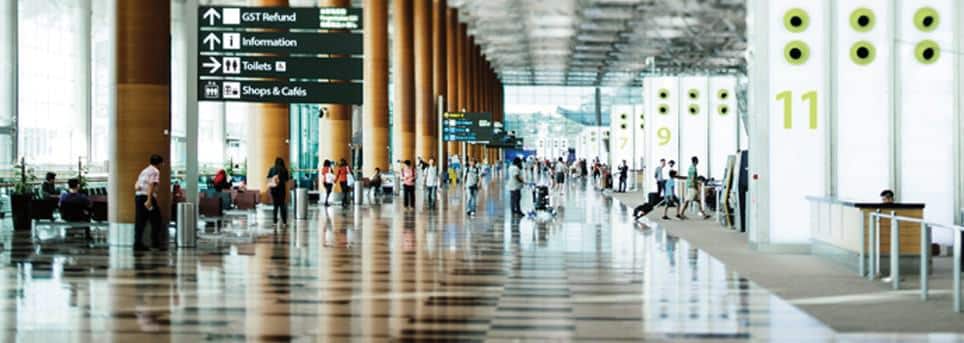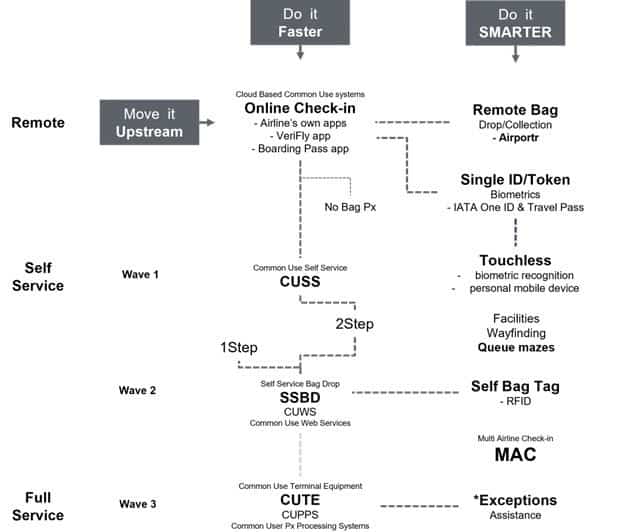
The priority in summer 2022 has been rebuilding the workforce following the pandemic but in the medium-term airports should be planning for automation to improve operational efficiency and to build resilience into their operation. In the coming years automated technology is going to be a critical factor in providing increased capacity.
Our experience working in space constrained airports such as London Heathrow, Schiphol and Bangkok and rapidly expanding regionals such as Bristol, Leeds Bradford and Budapest also shows us that small changes can make a big difference to the efficiency of the operation.
In our blog of Sept 2018 called ‘CUTE and CUSS – How does common use equipment give airport operators more flexibility?’ we discussed the improvements already generated by automated technology.
From our work with airports pre-COVID we observed that engaging stakeholders can often become a stumbling block for implementing CUTE and CUSS, as this reorganisation of assets can only be done with the agreement of many stakeholders. However, AiQ Consulting are used to working with airports and their stakeholders to highlight the benefits of such improvements through data analytics and modelling simulations.
Our analytics and modelling work identified a number of key benefits to all stakeholders:
- Reduced passenger process time
- Increased passenger throughput
- Asset optimisation, particularly floorspace
- Greater flexibility in the use of resources
- Increased resilience for operators
- Reduced operational costs
Other benefits include:
- Increased passenger satisfaction
- Creation of greater opportunity for future growth
- Keeping pace with future demand
- Reduced need to invest in fixed infrastructure
As airports implement automated processes such as CUSS, SSBD and CUTE we want to take a look at the direction automation is moving in (see graphic below). The newer technology solutions that are now being introduced focus on:
Move it upstream
Do it faster
Do it smarter
We will discuss the graphic below ‘Move it upstream’ in this blog, ‘Do it faster’ in our next blog and ‘Do it smarter’ in our final blog in this series.

Move it Upstream
Moving core airport processes upstream means passenger procedures are undertaken earlier in their journey and often before they even arrive at the airport. The adoption of this type of Cloud Based Common Use system gained pace towards the end of the pandemic when passengers were encouraged to arrive at the airport “ready to fly” in order to minimise their time and interactions there. Consequently, a lot of these processes are already well established; processes like passengers checking in before they arrive at the airport, using airline apps and travel document management apps such as VeriFLY, boarding pass apps and facilities like remote bag drops. All of these technologies help minimise impact on airport operations.
Passenger independence is key to airport efficiency – the more the passenger can carry out core processes themselves the more the airports and stakeholders benefit; from reduced operational costs to increased passenger throughput and all with no increase in footprint.
In our next blogs we will look at how airport automation is making check-in faster and smarter and what it means for airports and stakeholders.
At AiQ, our award-winning team of operational and analytical experts are dedicated to analysing, modelling and optimising every aspect of an airport. If you would like to find out more about automated technology and how it could benefit your airport please do get in touch.
You can read the second blog in our Airport Automation series here.

